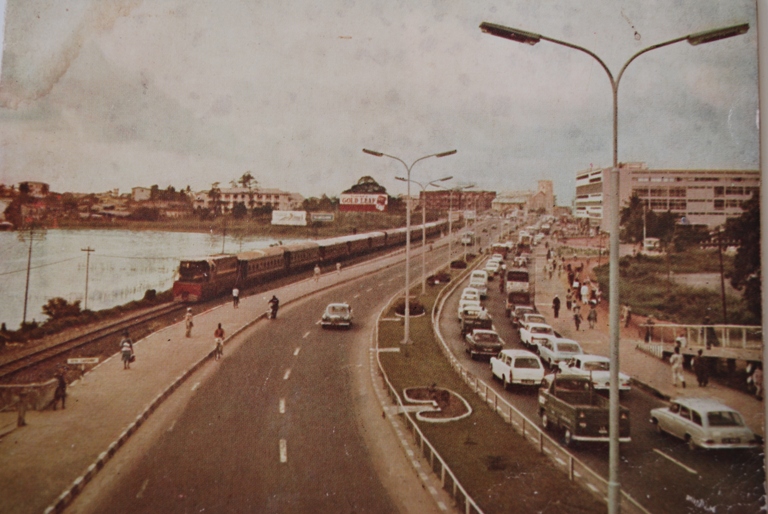From a visibly organised flow of traffic to the movement of pedestrians in an almost perfect formation, it is difficult to believe that the streets of Lagos state were characterised by such order and discipline in the late 1950’s and early 1960’s. Bicycle and motorcycle owners rode on either side of the road, with very little chances of getting knocked down by a car. This image below illustrates the once chaos-free Lagos.
Population growth in Lagos is a major contributor to the recent disorder on the streets of the metropolis. Currently housing the largest metropolitan population in Africa, Lagos has a small land area spanning 738 km2 (285 sq. mi) and harbours some of the worst traffic issues in the world. A survey carried out by research and analysis website, Mongabay.com, shows the estimates for the population of Lagos, Nigeria for five year periods from 1950-2015.

In 1955, there was a 62.85 percent increase in the number of inhabitants to 500,000, from 300,000 in 1950. This marked the beginning of the influx of Nigerians into Lagos state as the population continued to grow steadily to its current population of about 23.2 million.
Poor maintenance of necessary facilities and infrastructure such as drainage systems for instance, result in floods on the streets. If these amenities were in good working order, we would have no reason to be worried about daredevil drivers trying to dodge potholes, accidents or degenerated sidewalks. A 2007 PhD thesis shows that Area Boys and Bus Drivers are responsible for most of the traffic in Lagos. With almost 20 million people and no serious public transportation system, most Lagosians end up spending almost as much time commuting to and from the office as they do at work. Danfo Buses constitute 10.3 percent of the traffic, coupled with the unruly actions of Lagos drivers on the road which causes 9.5 percent of the traffic congestion in the city.

However, on a more positive note, the new robot, designed by WITECH ONG, a local engineering firm from DR Congo, could go a long way in curbing a few of these challenges. The robots have taken the jobs of less efficient and sometimes extortive human traffic wardens in Congo, and they could do the same in Lagos. Therese Izay Kirongozi, who is the head of the engineering firm behind the innovation, says the robots have a plan to address the challenge of fear. “If a driver says that he’s not going to respect the robot because it’s just a machine, the robot is going to take that and there will be a ticket for him,” she told CCTV Africa recently.









